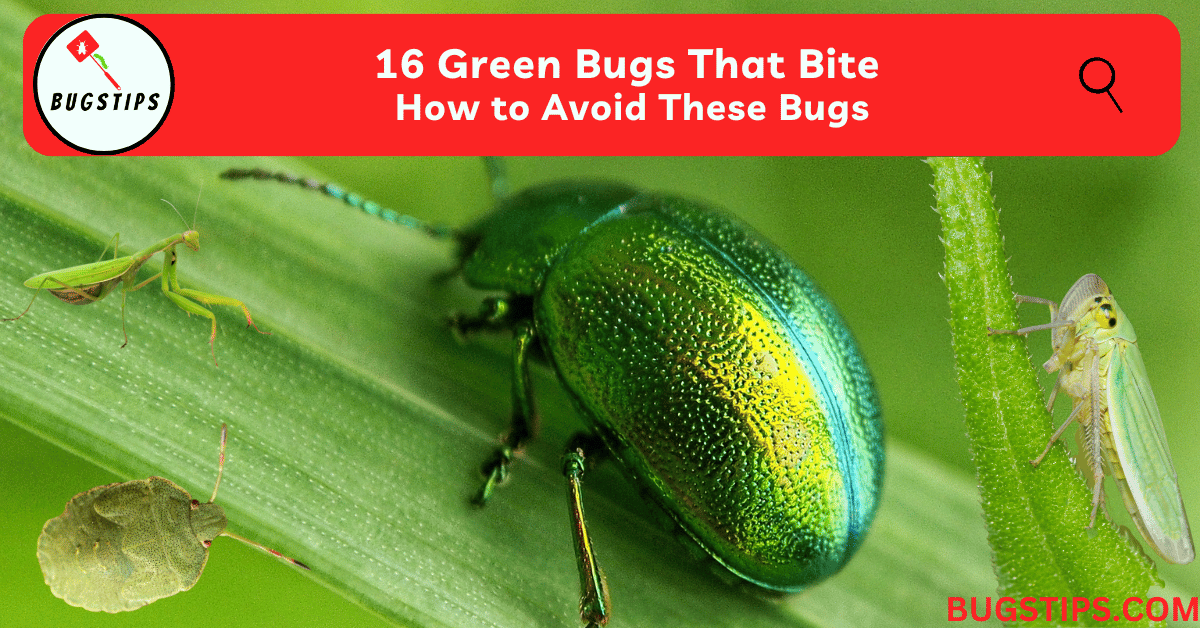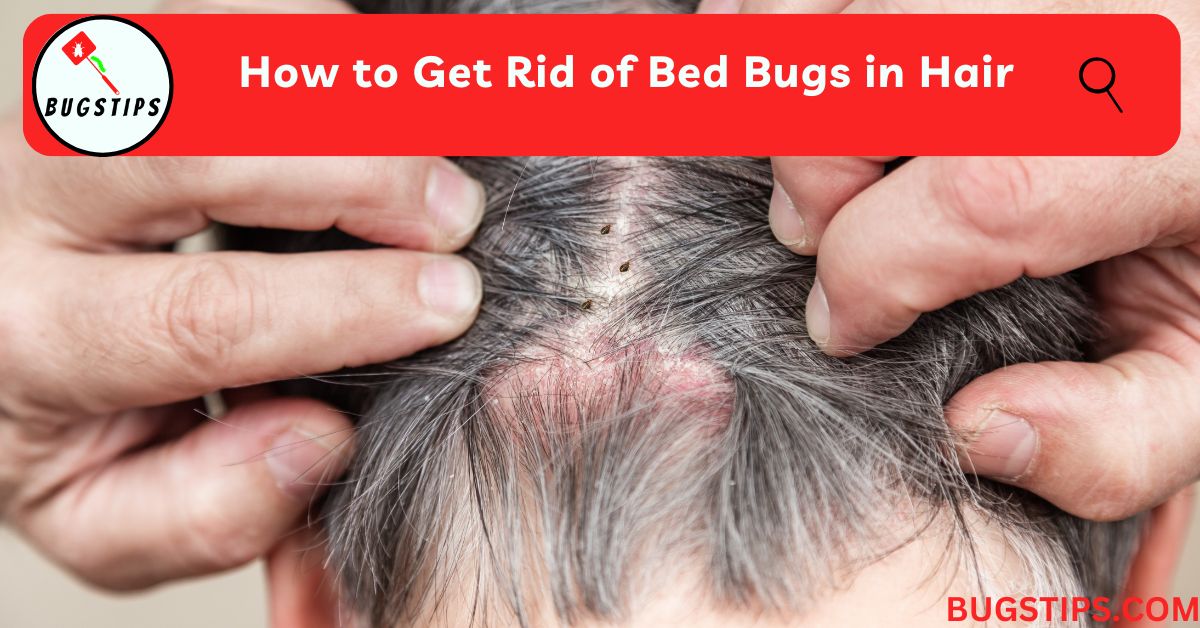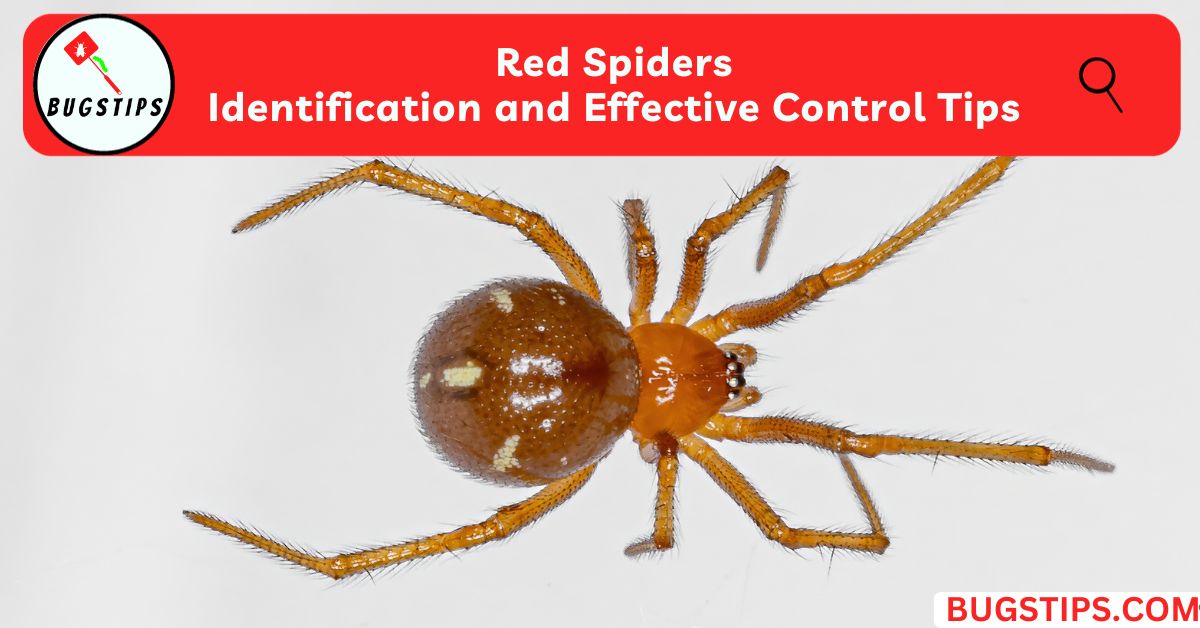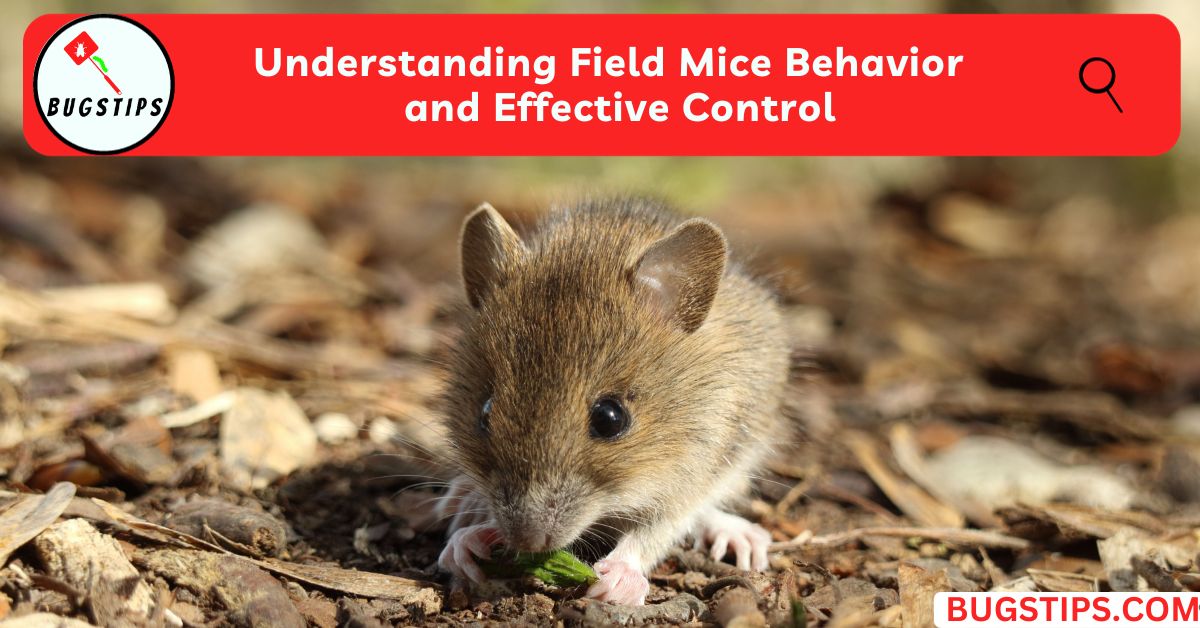This post may contain affiliate links which means as an Amazon Associate, this site may earn a small commission on qualified purchases made through links at no extra cost to you. Learn more on Affiliate Disclosure
Green bugs that bite are a nuisance we’ve all dealt with at some point during the warmer months.
Their bright green coloration allows them to blend in with foliage, making it easy to surprise unsuspecting people out enjoying the weather.
While most green-biting bugs are harmless, their bites can still irritate.
The good news is, with some basic knowledge, you can identify which green insects to watch out for and take measures to avoid being bitten.
In this article, we’ll cover some of the most common green biting bugs, what to do if you are bitten, and how to reduce your chances of being targeted.
Whether you spend a lot of time gardening, hiking, or just hanging out in your backyard, this guide will help you spot the culprits behind those mysterious pinch marks.
Let’s take a look at the green bugs that use their mandibles and mouthparts to pierce the skin.
Knowing their typical habitats and behaviors can help you enjoy the outdoors bite-free!
What are the Tiny Green Bugs That Bite?
Many tiny bugs are green in color and bite humans. These insects use their sharp mandibles and piercing mouthparts to feed on blood, plant juices, or prey.
While the majority do not pose a major health risk, their bites can certainly be annoying and itchy.
Types of Green Bugs That Bite
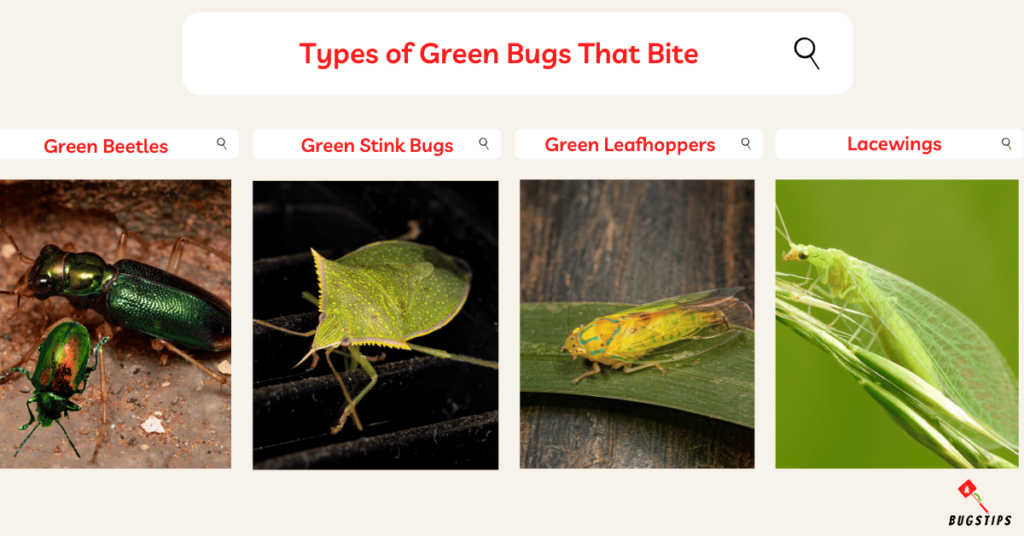
Green Beetles
- Beetles make up a large group of over 400,000 species worldwide.
- Green beetles like green tiger beetles and dogbane leaf beetles have powerful, sharp mandibles that can deliver a painful nip.
- Green tiger beetles are large, iridescent green beetles measuring up to 2.5 cm long.
- If carelessly grabbed or trapped against the skin, green tiger beetles will use their razor-like mandibles to fiercely bite in defense.
- Meanwhile, the tiny dogbane leaf beetle grows only 8-10 mm long.
- As a member of the Chrysomelidae family, it feeds exclusively on the leaves of dogbane plants.
- The small green beetles will eagerly bite human fingers with their jaws if handled or disturbed, though their tiny mouths cannot puncture the skin.
Related Article – 8 Bugs That Look Like Lint and Bite
Green Stink Bugs
- The aptly named green stink bug is a bright emerald green true bug measuring 1.4 cm long as an adult.
- They emit a foul, cilantro-like odor from glands near their legs when threatened.
- Green stink bugs are not aggressive towards humans but may bite with their sharp, needle-like mouthparts if harassed.
- The biting mouthparts (called a beak) are designed to pierce plant tissues and suck out juices, though they can also easily pierce human skin when handled.
- Their bite produces mainly irritation and localized swelling, as green stink bugs do not transmit any diseases.
- These bugs might resort to biting as a last line of defense against potential threats.
You May Also Like – 14 Small Tiny Brown Bugs In House
Green Leafhoppers
- Leafhoppers are small, wedge-shaped true bugs that earned their name from their ability to jump rapidly between plants and foliage.
- Many species have bright green coloring like the potato leafhopper and green sharpshooter.
- Using their needle-like piercing mouthparts, leafhoppers suck sap from the stems and leaves of plants.
- Though they primarily feed on vegetation, green leafhoppers can use their sharp mouthparts to bite humans if threatened or handled roughly.
- Their bites pierce the skin and cause a small amount of pain and minor swelling around the bite site.
- The irritation usually goes away within a day.
You May Also Like – White Bugs on Plants | 6 Surefire Solutions
Lacewings
- Lacewings are delicate green and brown insects with transparent wings that feature prominent veins.
- They have small, sickle-shaped mandibles designed for gripping and feeding on soft-bodied prey like aphids.
- Some species of lacewings like the common green lacewing will use these sharp mandibles to bite humans if carelessly handled or trapped against exposed skin.
- Though lacewings look fragile, their jaws can pinch with a surprisingly painful bite.
- The wound may bleed slightly and can cause minor irritation or swelling, but is otherwise harmless.
- Some lacewings also release foul-smelling liquids from special glands on their bodies when threatened.
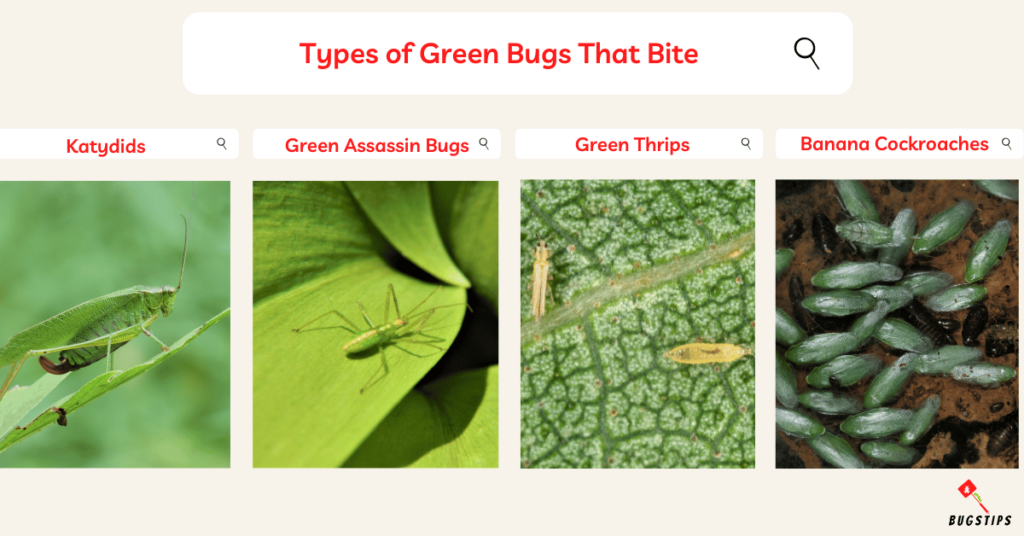
Katydids
- Katydids are a large family of green insects related to crickets and grasshoppers, with all members featuring exceptionally long, slender antennae.
- Ranging from 1 to 5 inches long, katydids are usually bright green and substantial in size.
- Male katydids are famous for producing loud mating calls at night that sound like they are repeating “Katy did” or “Katy didn’t.”
- Using their strong, chewing mandibles, katydids bite into stems, leaves, and other vegetation.
- They can also deliver a painful defensive bite to humans if carelessly handled or trapped against bare skin.
- Though not venomous, katydid bites produce irritating minor swelling that fades within a couple of days.
Related Article – 12 Tiny Black Bugs on Window Sill
Pale Green Assassin Bugs
- Also known as “zelus luridus,” pale green assassin bugs are a species of camouflaged predatory insects.
- They grow up to 1/2 inch long and lurk motionlessly among leaves and flowers waiting to ambush prey.
- Using their sharp, needle-like beak, they stab other insects and inject venom to paralyze and dissolve their insides.
- If roughly handled by humans, assassin bugs will bite defensively with this painful beak.
- The bite causes minor swelling and irritation around the wound site that gradually fades away.
- Though unpleasant, it does not transmit any venom or diseases.
Green Thrips
- Thrips are tiny, fringe-winged insects just 1-2 millimeters long that feed on plants by puncturing stems, leaves, and petals and then sucking out the sap.
- Many species have greenish-colored bodies, like the southern green stink thrips.
- The tiny bugs fly from plant to plant and can enter homes through openings.
Related Article – Do Thrips Bite?
- Though they primarily target vegetation, green thrips will readily bite exposed human skin if given the chance, using their tiny sharp mouths to poke and rasp.
- The resulting bites cause small bumps or welts that sting and itch annoyingly.
- Though irritating, thrips bites do not cause any serious reactions or health effects beyond temporary discomfort.
Banana Cockroaches
- Despite their name, banana cockroaches are not pests of banana plants – their vibrant green coloration is what earned them this misleading moniker.
- Originating in tropical regions, these large roaches can grow over 1 inch in length.
- Banana cockroaches have spiny legs adapted for climbing and chewing mandibles.
- If carelessly handled, they can deliver a defensive nip with their jaws that sting sharply.
- However, their bite does not break through human skin or inject any venom, despite the initial pain.
- The bite area may remain sore for a short time but causes no serious injury beyond a minor pinch.
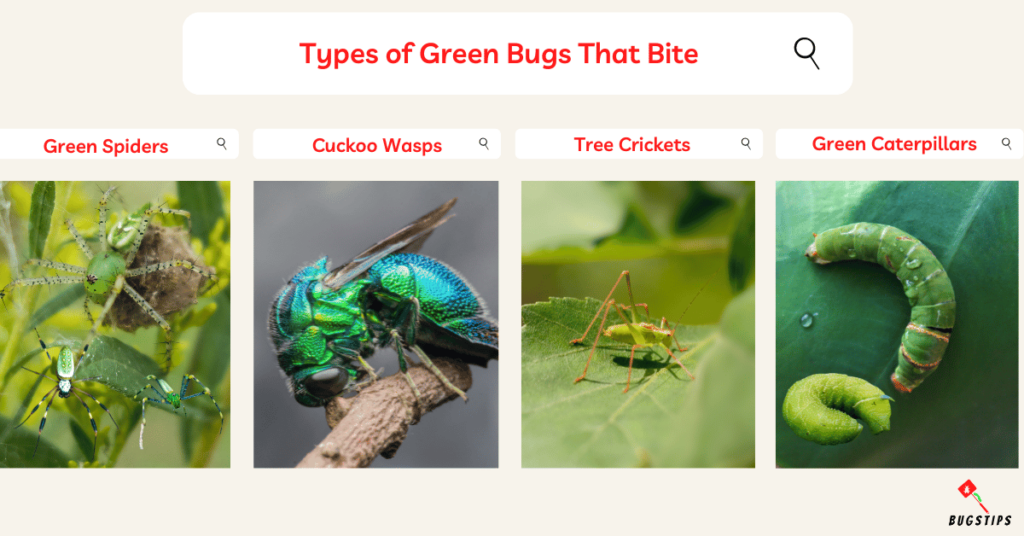
Green Spiders
- Many different spiders have green color variations that act as camouflage, like the green lynx spider and the green orb weaver.
- Most spiders have venomous fangs primarily used to immobilize insect prey.
- However, the venom of green spiders is only mild to humans if they do bite defensively when trapped against bare skin or handled.
Related Article – Are Banana Spiders Poisonous?
- Bites may sting initially and cause minor swelling, redness, and itchiness around the bite site that usually disappears within a few days.
- Medically significant reactions are rare, as few green spider species are aggressive or possess highly toxic venom to people.
Cuckoo Wasps
- Cuckoo wasps are parasitic insects aptly named for their behavior of invading other wasps’ and bees’ nests to lay eggs.
- Female cuckoo wasps have a stinger-like organ on their abdomen that injects venom to paralyze prey insects for their offspring.
- If roughly handled by humans, aggravated female cuckoo wasps are capable of stinging exposed skin with this same organ in defense.
- The sting causes a sharp, burning pain, along with minor swelling and redness lingering around the sting site for a day or two.
- While painful, the venom has limited medical significance to humans beyond localized discomfort.
- Reactions are typically less severe than true wasps or bee stings.
Related Article – Does Soapy Water Kill Wasps?
Tree Crickets
- Tree crickets are slender light green insects that perfectly camouflage themselves among the foliage.
- Growing up to 3/4 of an inch long, tree crickets are best known for the loud chirping songs males produce to attract mates.
- Using their large, powerful jaws, they chew and rasp on twigs, bark, leaves, and stems.
- On very rare occasions, males may pinch with their mandibles if carelessly handled, but cannot break through human skin.
- Their occasional nibbling bites are completely harmless and painless with no effects beyond barely noticeable pressure.
Green Caterpillars
- Many moth and butterfly larvae are green-colored caterpillars, like tomato hornworms and inchworms.
Related Article – What Do Hornworms Turn Into?
- They have powerful jaws designed for chewing leaves and vegetation.
- If touched, some species can give defensive bites with these same strong mandibles.
- The bites feel like a sharp pinch and may cause minor to moderate irritation and inflammation.
- In sensitive individuals, they can trigger minor allergic skin reactions with redness, bumps, and itchiness around the bite site.
- These symptoms fade over the course of a few hours to a couple of days.
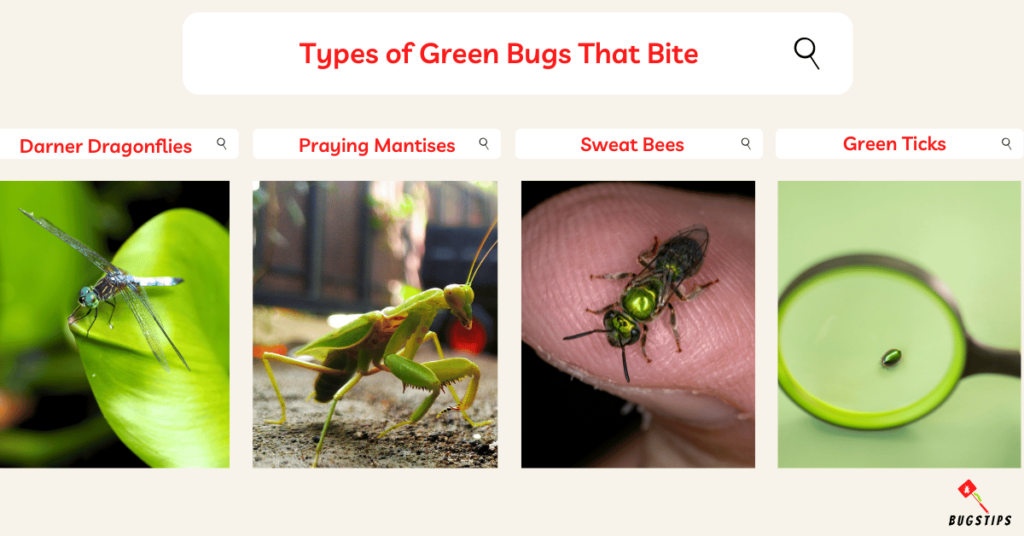
Green Darner Dragonflies
- Green darners are very large, common dragonflies found around ponds and marshy areas.
- Growing over 2 inches long, they are metallic green and brown in color.
- Green darners capture flying insect prey like mosquitoes in midair using their spiny legs in a basket-like configuration.
- They do not bite or sting humans – their legs are designed only for clasping small bug prey, and their mouths only consume liquids.
- On the very rare chance a green darner lands on human skin, its touch causes no harm or reaction.
- Only the largest tropical dragonflies have mandibles strong enough to break the skin.
You May Also Like – Can Horse Flies Kill You?
Praying Mantises
- Praying mantises are predatory insects named for their prayer-like upright stance.
- Their raptorial front legs are adapted with rows of sharp spines used to tightly grasp insect prey like flies and moths.
- Mantises hold captive prey and eat them alive head-first.
- However, they do not typically view humans as prey and only bite under severe provocation like being pinched.
- Their jaws can potentially scratch skin, but cannot typically break through human skin when biting defensively.
Related Article – What Do Praying Mantis Eat?
Sweat Bees
- Male sweat bees earned their common name from being attracted to the salt in human perspiration.
- However, only female sweat bees are capable of stinging humans.
- When trapped against bare skin, they can quickly sting in defense using their sharp abdomens.
- But the slender males lack stingers and do not bite or sting humans even when contacting wet skin.
- While they might land on human skin, their bites are usually not painful and are more of a mild annoyance.
Green Ticks
- Several tick species like the green deer tick have greenish coloration that provides camouflage in vegetation.
- They feed exclusively on blood by embedding their mouths into the skin and gulping down blood for several days.
- The bites often go unnoticed until the tick has visibly swollen with consumed blood.
- However, some people have minor itching or irritation at the bite site.
- More concerning, ticks transmit diseases like Lyme disease through their bites, which can cause severe illness if not treated promptly with antibiotics.
Related Article – Do Ticks Die in the Winter?
What Should You Do If Bitten by a Green Bug?
While the bites of most green bugs are not typically harmful to humans, it’s still essential to know how to address the situation.
If you suffer a bite from a green insect, there are a few steps you should take.
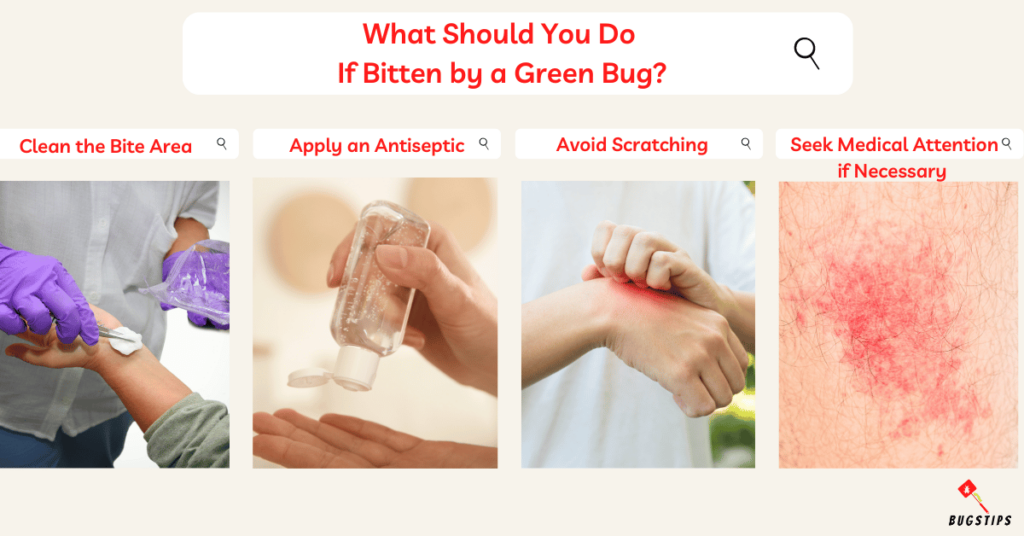
Clean the Bite Area
- As soon as you notice a bite, gently clean the affected area with mild soap and water.
- This simple step helps remove any irritants or potential pathogens left behind by the bug’s mouthparts.
- Gently pat dry afterward. Keeping it clean reduces the risk of infection
Apply an Antiseptic
- After washing, apply an antiseptic like rubbing alcohol, hydrogen peroxide, or iodine to the bite using a cotton ball.
- This helps kill any microbes that entered the wound.
- It also dries out the bite site to reduce fluid buildup and swelling.
Avoid Scratching
- Try not to scratch or rub at the bite, even if it itches severely.
- This can damage the wound and skin, introduce bacteria, and worsen swelling and irritation.
- You can apply creams like hydrocortisone and take oral antihistamines to manage itchiness instead.
Seek Medical Attention if Necessary
- Monitor for signs of infection like pus, worsening redness/swelling, streaking redness from the bite, fever, or body aches.
- If the bite appears infected or you have a severe reaction, promptly seek medical care.
- The doctor can prescribe oral antibiotics or steroid medications as needed to treat infection or reduce significant inflammation.
You May Also Like – 22 Bugs with Hard Shells | Top Tips to Eliminate
How to Avoid Getting Bitten by Green Bugs
When spending time outdoors, it’s important to take measures to reduce your risk of getting bitten by green-colored biting bugs like beetles, lacewings, and others.
Here are some tips to avoid making yourself an easy target.

Wear Protective Clothing
- When spending time outdoors, especially in areas known for green bugs, opt for long-sleeved shirts, pants, and closed-toe shoes.
- These layers act as a barrier between your skin and potential biters.
- While it might feel warm, choosing lightweight, breathable fabrics can help you stay comfortable while keeping bugs at bay.
Use Insect Repellents
- Apply them to exposed skin and clothing according to the product’s instructions for optimal protection.
- Pay extra attention to areas where bugs might be tempted to bite, such as ankles, wrists, and the back of your neck.
Avoid Strong Fragrance
- Insects, including green bugs, are drawn to strong fragrances.
- To reduce your attractiveness to these bugs, opt for unscented or lightly scented personal care products. This includes soaps, shampoos, and lotions.
- When you smell less enticing to bugs, you’ll have a more enjoyable outdoor experience.
Avoid Bug-Prone Areas
- Stay away from areas known for swarming biting pests like wetlands and flood zones.
- Be aware of peak biting times at dawn and dusk when some green insects are most active.
Be extra cautious around preferred habitats of green biting insects, like gardens, grassy areas, and wooded places. Avoid reaching into shrubbery and dense vegetation with bare hands.
You May Also Like – Bugs in Mailbox: 10 EASY Ways to Keep Them Out
Final Thoughts
Dealing with green-biting bugs can be so annoying! Their ability to seamlessly blend in with foliage allows them to ambush us when we’re trying to enjoy the outdoors.
While most green insects are not dangerous, their bites can still be quite irritating.
But being able to identify which insects may bite, understanding where and when they are most active, and taking simple precautions like wearing long-sleeved clothing, using repellents, and inspecting for clingers can significantly reduce your chances of getting bit.
With some greater awareness and a few simple precautions, we can continue enjoying the beauty of nature without letting green biters entirely spoil our fun.
A small number of bites may be an inevitable annoyance but doesn’t mean we have to avoid the outdoors altogether.
By coexisting responsibly with these insects, we can have the best of both worlds!
FAQs
What little green bugs can bite you?
Green biting bugs include green tiger beetles, dogbane beetles, green stink bugs, lacewings, katydids, assassin bugs, and others. Most have sharp mouthparts.
What is the little green water bug that bites?
Water striders are little green aquatic insects that can bite with their piercing mouthparts.
What bug that bites looks like a tiny green cricket?
Leafhoppers resemble tiny green crickets and can bite with needle-like mouths.
What are big green bugs that fly?
Some large flying green bugs are dragonflies, dobsonflies, giant water bugs, and large katydids.
What is a bright green fly that bites?
Greenhead flies are bright green flies known for their painful bites. These flies can be a nuisance in coastal areas and can cause discomfort with their bites.
Can Bed Bugs Be Green?
No, bed bugs only come in reddish-brown hues and do not have green varieties.
What are little lime green bugs?
Aphids, leafhoppers, springtails, and other bugs can be lime green. They are often plant-eaters.
What are the little green jumping bugs in my bed?
The little green jumping bugs in your bed might be springtails. These tiny insects are harmless and often found in damp environments.
What are the green mosquito bugs?
These sound like midges also known as “no-see-ums,” are small flying insects that resemble mosquitoes. They are known for their bites, which can cause itching and discomfort.
What Kind of Aphids Are Green?
The Green Peach Aphid is a common type of aphid that is, as the name suggests, green.
What Is the Green Bug That Smells When Killed?
The Green Stink Bug is a green insect that emits a foul odor when threatened or crushed. This odor acts as a defense mechanism against predators.
Resources – (for further reading)
The University of Florida – Beetles – Ask IFAS | Stink bugs | green lacewings of Florida
UC IPM – Leafhoppers | Mantids, or Praying Mantises
Britannica – Katydid | Leafhopper | Sweat bee

